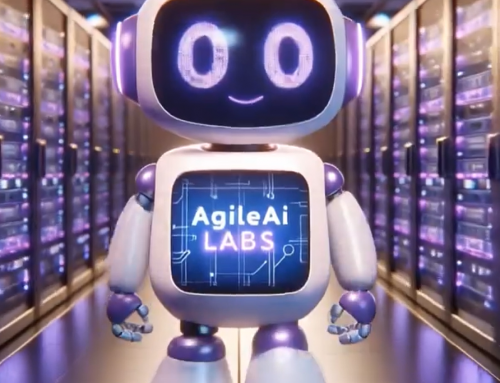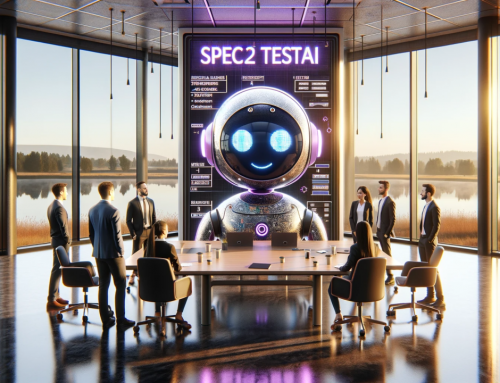Blog
Revolutionizing Defect Prevention in Software Development:
The Role of Spec2TestAI™ in Shifting Left
Scott Aziz | December 14, 2023
The old adage “an ounce of prevention is worth a pound of cure” has never been more relevant. Defect prevention, a critical aspect of software quality assurance, is undergoing a transformative shift. Industry experts are increasingly advocating for “shifting left” – a practice that involves integrating quality assurance measures early in the software development lifecycle, particularly during the requirements phase.
The Current State of Defect Prevention
Traditionally, defect detection often occurs late in the development cycle, typically during testing or post-release. However, this approach is both costly and inefficient. According to IBM Systems Sciences Institute, rectifying a defect found during the implementation stage can be up to 15 times more expensive than if it were identified during the design phase.
Shifting left, therefore, emphasizes defect prevention rather than detection. It involves thorough static testing of requirements, ensuring that issues are identified and addressed before a single line of code is written. Static testing includes reviewing the requirements, user stories, and acceptance criteria to identify potential ambiguities, inconsistencies, or missing elements. We use Artificial Intelligence to create a better requirement.
Spec2TestAI: Pioneering Defect Prevention through AI-Driven Requirements Analysis
Spec2TestAI is a paradigm shift in a defect prevention strategy for software development. By integrating AI into the requirements analysis process, Spec2TestAI goes beyond traditional static testing methods, offering a proactive approach to identifying and resolving potential issues even before they manifest in the coding phase.
Active Scanning for Technical and Design Discrepancies:
One of the critical features of Spec2TestAI is its ability to actively scan and identify technical or design discrepancies across user stories. This capability is crucial, especially in large-scale projects where multiple teams work on different modules or features that need to integrate seamlessly.
Example 1: Consistency in System Interaction: Consider an eCommerce platform with multiple user stories detailing the checkout process. Some stories might describe a payment gateway integration, while others focus on user interface elements. Spec2TestAI can identify if one story suggests a payment method that’s incompatible with the system outlined in another story, thus preventing a significant potential defect.
Example 2: Identifying Overlapping Functionalities: In a project where two teams are working on different features, there might be a risk of developing overlapping functionalities. For instance, one team might be enhancing the search functionality, while another works on a recommendation engine. Spec2TestAI’s intelligent scanning can pinpoint overlapping aspects, such as similar database queries or user interface elements, enabling teams to streamline their efforts and avoid redundancy.
Enhancing Collaboration and Cohesion:
By highlighting these discrepancies, Spec2TestAI fosters better collaboration and cohesion among development teams. It ensures that all team members are on the same page regarding the project’s technical and design aspects, leading to a more integrated and cohesive product.
Preventing Costly Revisions and Delays:
The early detection of these discrepancies plays a vital role in reducing the need for costly revisions later in the development cycle. By catching these issues at the requirements stage, Spec2TestAI helps in avoiding the time-consuming and expensive process of reworking code and redesigning features post-development.
Comprehensive Requirements Analysis:
Spec2TestAI’s comprehensive analysis extends to all aspects of a requirement. It evaluates user stories not just in isolation but as part of the entire system. This holistic approach ensures that every requirement fits perfectly within the larger picture, aligning with the overall project objectives and system architecture.
The Bottom Line:
Spec2TestAI’s AI-driven requirements analysis represents a significant advancement in the field of software quality assurance. By proactively identifying technical and design discrepancies, enhancing team collaboration, and preventing costly revisions, Spec2TestAI is setting a new standard in agile development. Spec2TestAI doesn’t just assist in creating requirements; it ensures that these requirements lead to the development of high-quality, defect-free software.
The Future of Agile Development with Spec2TestAI
As organizations strive to accelerate their development processes without compromising on quality, platforms like Spec2TestAI will become indispensable. By facilitating a shift-left approach in the agile development process and leveraging the power of AI in requirement analysis and creation, Spec2TestAI is setting new standards in software quality assurance, proving that the best way to deal with defects is to ensure they never occur in the first place.







